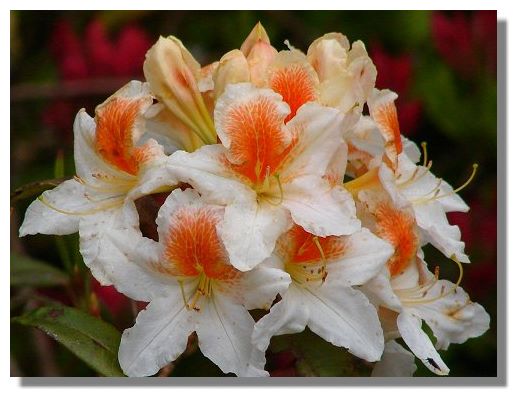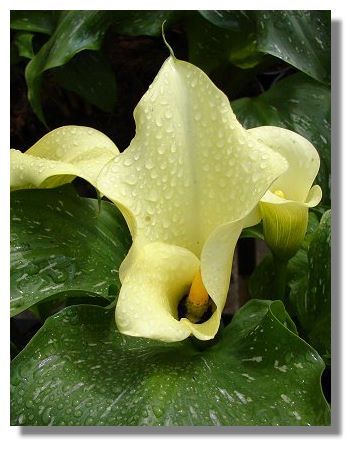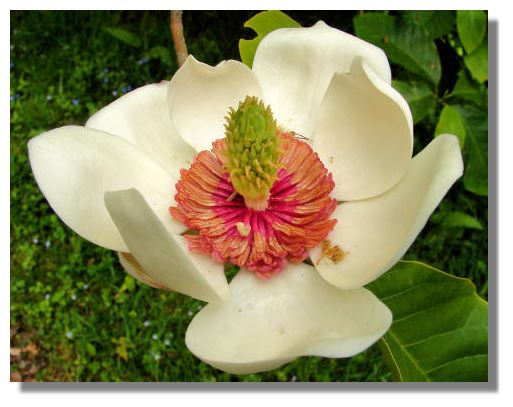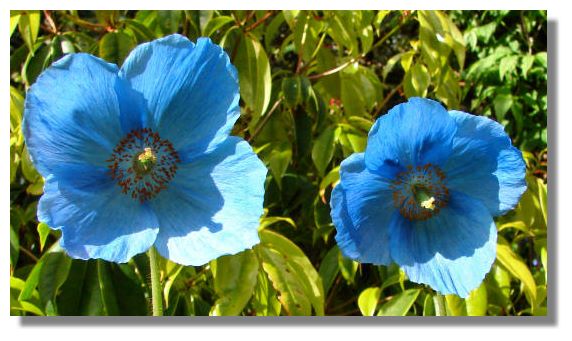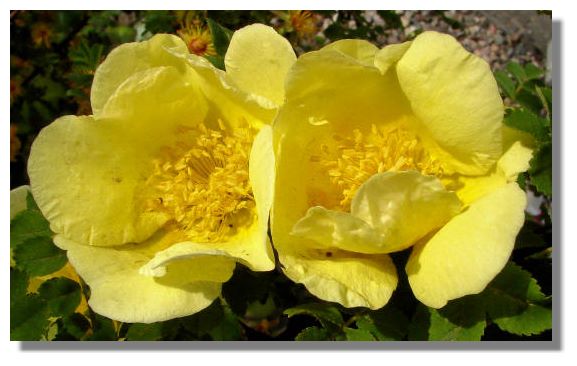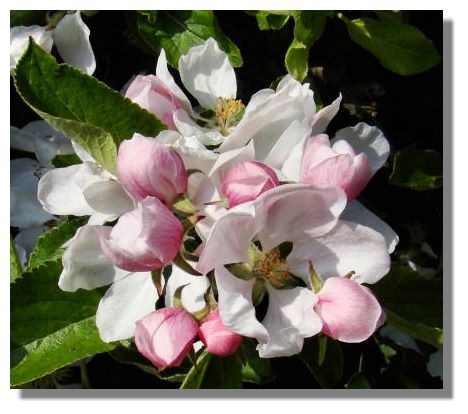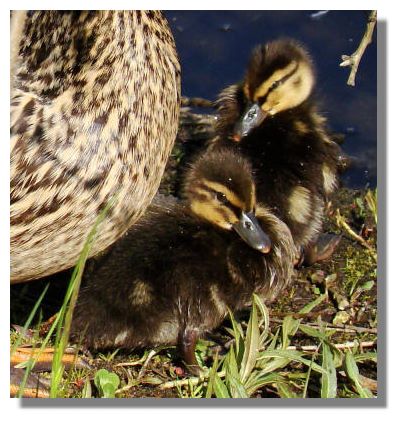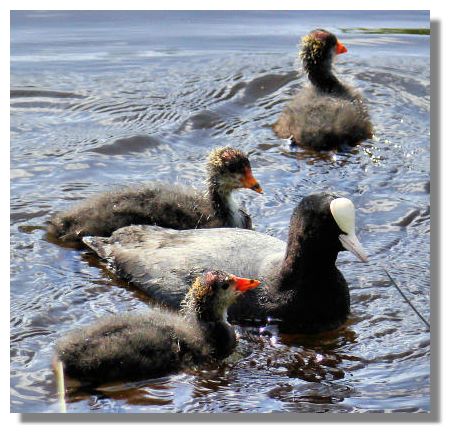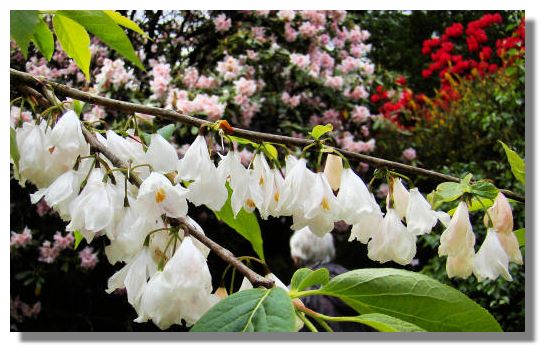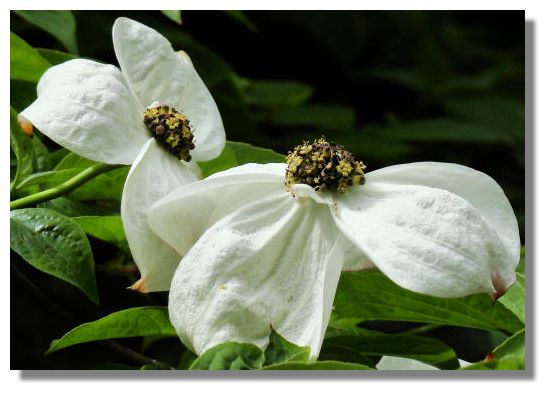This unusual orange and white azalea was growing in the National Trust for Scotland garden at Geilston, near Cardross, Argyll. The garden is full of blossom on the many azalea and rhododendron bushes which were planted by the earlier owners of the property. For more on Geilston House and its gardens, see Places to Visit - Geilston House.
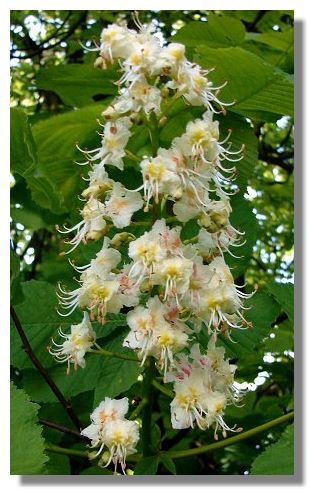
A sure sign that the seasons are marching on is the appearance of the chestnut "candles" with their promise of glossy nuts later in the year.
This zantedeschia is covered with water droplets from a shower which had passed over shortly before the photo was taken. Yes, it had been another of those days where "if you don't like Scottish weather, wait half-an-hour and it'll change."
This magnificent late flowering magnolia is in an out-of-the-way corner of the woodland area attached to Glendoick House in Perthshire, between Perth and Dundee.
Glendoick is not only famous for its rhododendrons and azaleas, but also for its collection of mecanopsis - the Himalayan poppy. The woodland area has a number of different varieties, including various shades of yellow, white and the blue.
The flowers of the Potentilla shrub resemble small, wild roses, and the abundant blooms last through the summer. The flowers are only about an inch across.
The pink on the outside of the petals of the apple blossom adds to the attraction of this "bouquet". This is just one small section of over a dozen apple trees trained against a wall in the gardens of Drummond Castle in Perthshire.
The new spring arrivals are now making their appearance, including these Mallard ducklings. Although the male and female pairs stay together during winter and spring, the male takes no part in looking after the young ducklings. The young are able to swim, dive and feed themselves soon after hatching. Which is just as well as their mother is likely to compete with them for food. But she will chase off any other birds which are threatening her brood (which can be as many as 13 youngsters).
Unlike the Mallards, both Coot parents not only look after their offspring, they work hard at feeding their hungry chicks. When they initially hatch, the female stays with them in the nest for the first few days and the male brings them food. Coots are often very territorial and violent fights can break out if a rival bird strays too close.
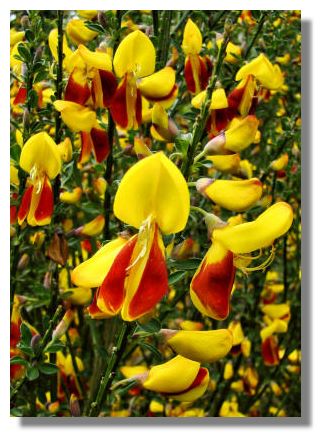
The small, pea-like flowers of Broom (Cytisus is its botanical name) are most often seen in yellow. But they also come in cream, orange or red, or a mixture of red and yellow. The graceful branches are covered in these bright flowers and the tiny leaves don't get in the way at all.
The bare branches of the large deciduous Halesia become covered in the spring by clusters of white, bell-shaped flowers, about an inch across. Understandably, Halesia's popular name is the "Snowdrop Tree". It is a native of south-east USA.
Some varieties of Cornus (Dogwood) are often grown for their brilliant winter stem colour, but others such as this one produce delightful white flowers. Later in the year, the fruits appear - looking like a genetically modified strawberry, which went badly wrong!If you want to look back at other editions of these photos of Scotland week by week, there is an Index Page
